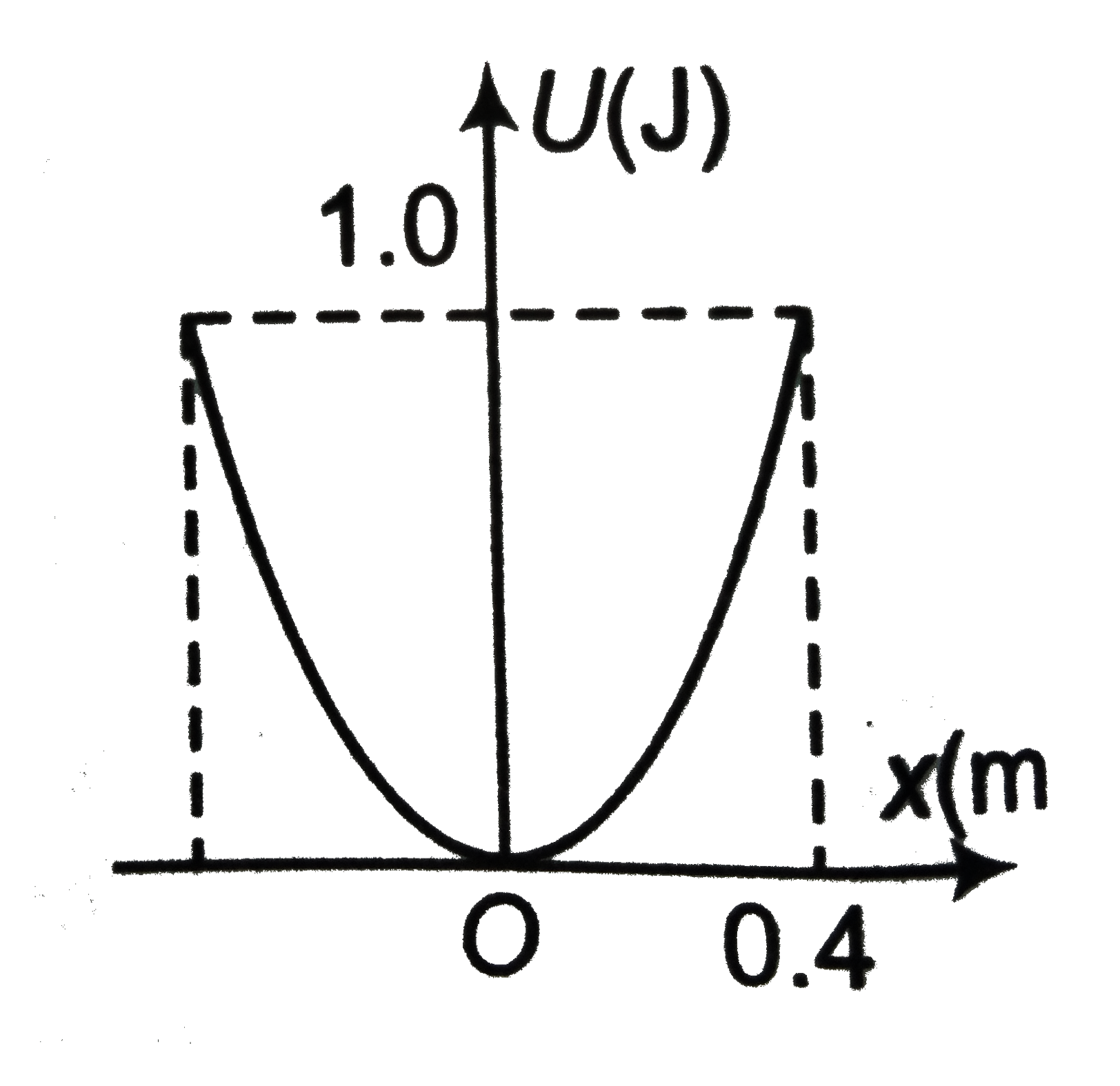A student says that he had applied a force F=−k√x on a particle and the particle moved in simple harmonic motion. He refuses to tell whether k is a constant or not. Assume that he has worked only with positive x and no other force acted on the particle
As x increases k increaes
As x inceases k decreases
As x increases k remains constant
The motion cannot be simple harmonic
The correct Answer is:A
To solve the problem, we need to analyze the force applied to the particle and determine if it can lead to simple harmonic motion (SHM). The force given is F=−k√x.
Step 1: Understand the force equation
The force acting on the particle is given by:
F=−k√x
where k is a constant (or not) and x is the position of the particle.
Step 2: Relate force to acceleration
According to Newton's second law, the force can also be expressed as:
F=ma
where m is the mass of the particle and a is its acceleration.
Step 3: Express acceleration in terms of position
In simple harmonic motion, the acceleration a can be expressed as:
a=−ω2x
where ω is the angular frequency. Therefore, the force can also be written as:
F=−mω2x
Step 4: Set the two expressions for force equal
Since both expressions represent the same force acting on the particle, we can set them equal to each other:
−k√x=−mω2x
Step 5: Rearrange the equation
Removing the negative signs and rearranging gives:
k√x=mω2x
Step 6: Solve for k
Dividing both sides by √x (assuming x>0):
k=mω2√x
Step 7: Analyze the relationship between k and x
From the equation k=mω2√x, we can see that k is directly proportional to √x. This means that as x increases, k also increases.
Conclusion
Since we have established that k increases with x, the correct option is:
- As x increases, k increases.
Final Answer
The correct option is: As x increases, k increases.
---
The force acting on the particle is given by:
F=−k√x
where k is a constant (or not) and x is the position of the particle.
According to Newton's second law, the force can also be expressed as:
F=ma
where m is the mass of the particle and a is its acceleration.
In simple harmonic motion, the acceleration a can be expressed as:
a=−ω2x
where ω is the angular frequency. Therefore, the force can also be written as:
F=−mω2x
Since both expressions represent the same force acting on the particle, we can set them equal to each other:
−k√x=−mω2x
Removing the negative signs and rearranging gives:
k√x=mω2x
Dividing both sides by √x (assuming x>0):
k=mω2√x
From the equation k=mω2√x, we can see that k is directly proportional to √x. This means that as x increases, k also increases.
Since we have established that k increases with x, the correct option is:
- As x increases, k increases.
The correct option is: As x increases, k increases.
Topper's Solved these Questions
- SIMPLE HARMONIC MOTIONBOOK - HC VERMA ENGLISHCHAPTER - SIMPLE HARMONIC MOTIONEXERCISE - Objective-2
15 Videos
- SIMPLE HARMONIC MOTIONBOOK - HC VERMA ENGLISHCHAPTER - SIMPLE HARMONIC MOTIONEXERCISE - Exercises
58 Videos
- SIMPLE HARMONIC MOTIONBOOK - HC VERMA ENGLISHCHAPTER - SIMPLE HARMONIC MOTIONEXERCISE - worked out Examples
22 Videos
- ROTATIONAL MECHANICSBOOK - HC VERMA ENGLISHCHAPTER - ROTATIONAL MECHANICSEXERCISE - Questions for short Answer
21 Videos
- SOME MECHANICAL PROPERTIES OF MATTERBOOK - HC VERMA ENGLISHCHAPTER - SOME MECHANICAL PROPERTIES OF MATTEREXERCISE - Objective-2
7 Videos
Similar Questions
A student says that he had applied a force F=−k√x on a particle and the particle performs in simple harmonic motion. He refuses to tell whether k is a constant or not. Assume that he has worked only with positive x and no other force acted on the particle.
View SolutionAccording to a scientists, he applied a force F=−cx1/3 on a particle and the particle is performing SHM. No other force acted on the particle. He refuses to tell whether c is a constant or not. Assume that he had worked only with positive x then :
View Solution
Figure. Shows the variation of force acting on a particle of mass 400 g executing simple harmonic motion. The frequency of oscillation of the particle is
View Solution
Figure. Shows the variation of force acting on a particle of mass 400 g executing simple harmonic motion. The frequency of oscillation of the particle is
View SolutionA particle of mass 2kg moves in simple harmonic motion and its potential energy U varies with position x as shown. The period of oscillation of the particle is

View SolutionA particle of mass 2kg moves in simple harmonic motion and its potential energy U varies with position x as shown. The period of oscillation of the particle is

View SolutionA particle executing simple harmonic motion has amplitude of 1m and time period 2s. At t=0, net force on the particle is zero. Find the equation of displacement of the particle.
View SolutionA particle executing simple harmonic motion comes to rest at the extreme positions. Is the resultant force on the particle zero at these positions according to Newton's first law?
View SolutionA particle moving along the X-axis executes simple harmonic motion, then the force acting on it is given by
where, A and K are positive constants.
View SolutionA person says that he mesured the acceleration of a particle to be nonzero while no force was acting on the particle
View Solution
